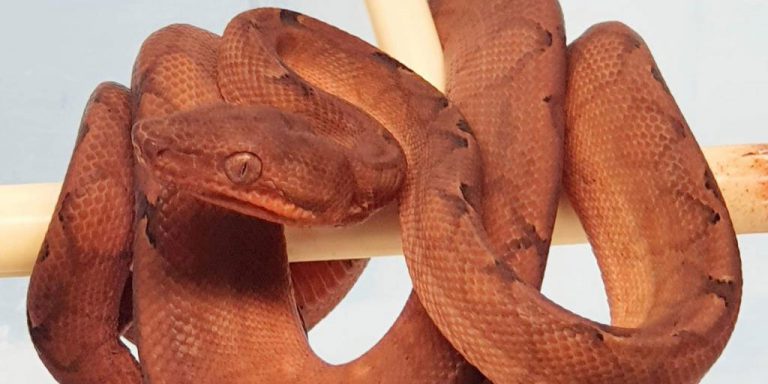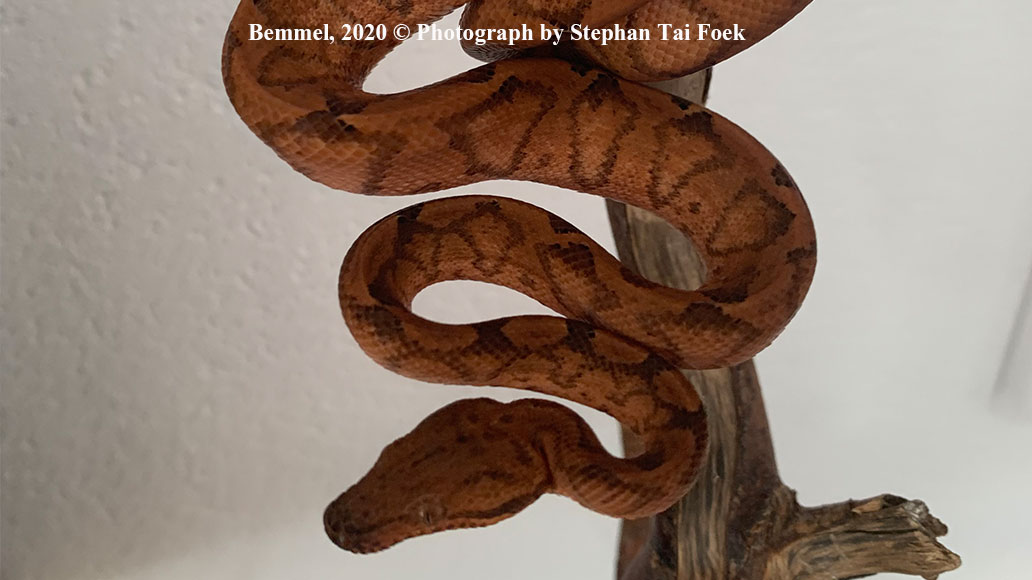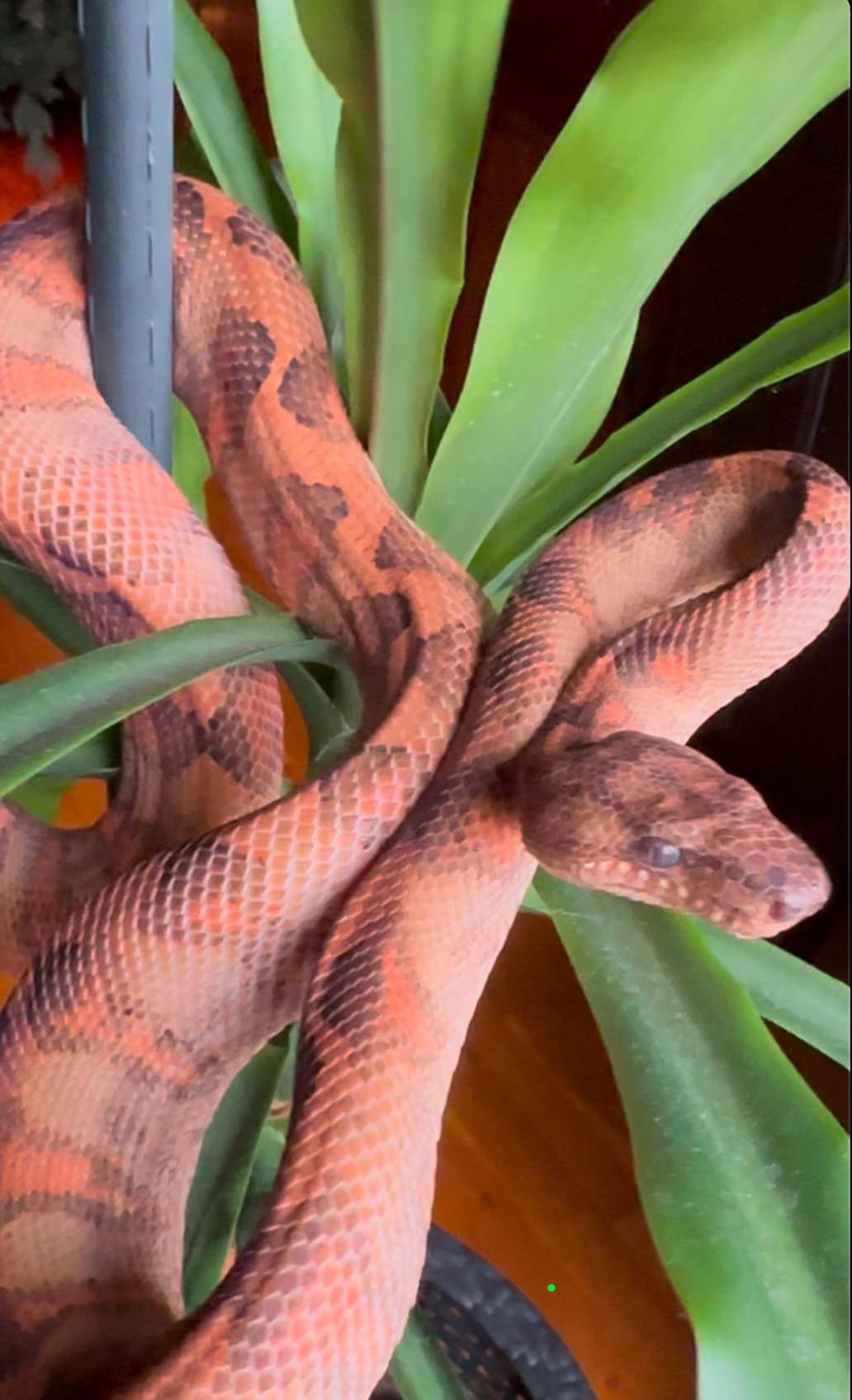Corallus annulatus English name: Annulated boa

Caresheet
Caresheet
Corallus annulatus ranges from extreme southeastern Guatemala to southwestern Ecuador (west of the Andes).
Corallus annulatus grows to a length of around 1.5 a 1.8 meter (5-6ft).
There are two distinct color phases seen in this species. The most common appearance is the gray/brown phase in which individuals have a light gray to brown background color overlaid with dark rhomboidal rings along the flanks. The red/orange phase is less common and individuals of this phase range from burnt orange to red with darker brown rings on the sides.
Average size 1.5 – 1.8 meter
The Annulated tree boa falls under CITES II, to own this snake you need CITES import papers when it’s wild caught or you need for captive bred animals a certificate of origin from the breeder. You should get this when you buy the animal.
I house the Corallus males in seperate cages build from shuttering plywood 62 cm long, 75 cm wide and 60 cm high. I use newspaper as a substrate. Males can’t be housed together when they are mature. There’s always one dominant and it can go well for a time but if they are mature mostley the weaker Amazon will stop feeding and get stressed. The females are housed per 2 in cages build from shuttering plywood 125 cm long, 75 cm wide and 60 cm high. I use newspaper as a substrate with some branches and a flat spaces where the corallus can rest on.
The light period being used is 12hrs on and 12hrs off. When using lights also as heatsource make sure you put the light to one side of the enclosure. So don’t put it right in the middle. By putting it to the right side or left side of the enclosure you will create a warm side and a cooler side of the enclosure. This way your boa can choose for himself/herself what they want. Also put the waterbowl on the cool side of the enclosure, don’t put it underneath the light, this may cause waterrot. We use 28 watt lights, this creates about 28 – 30 degrees celsius as a hotspot.
Lightning bulbs are used to create heat spots. Heating panels on a thermostat are used for overall heating.
The overall temperature gradiënt varies between 26-28 degrees Celcius created with the heatpanels. A basking site of 30-34 degrees Celcius is created with a lightbulb.
I keep the humidity around 60% daytime and 90%. Nighttime.
The enclosures will be misted 1 hour before the lights go out with lukewarm water. This wil create a peak moment of humidity during the evening and will dry out in the morning when the lights go on. I will mist the enclosures some more when one of the snakes should be in shed.
Mouse pups small: 2 gsm
Mouse pups middle: 4 gsm
Mouse pups large: 6-8 gsm
Mouse small: 8 – 15 gsm
Mouse regular: 15 – 25 gsm
Mouse large: 20- 30 gsm
Weaner rats: 60 gsm
Large weaner rats: 60-90 gsm
Baby’s will start witth 2 gsm also not try to feed to large prey items the first 2 years. I feed big adult females (700 gsm and more) large weaner rats.
Baby’s till 2 year animals will get once a week a prey. Sometimes i will skip a feeding.
Adult animals will get an prey item once 3-4 weeks.
I make sure that the females are fed well and in perfect condition. The males are a bit slender compare with the females. NOT SKINNY! In November i start with lowering the time that the lights are on. They go from 12 hours on, to 8 hours on within 4 weeks. I will introduce the male by the female. Februari I will start to go back to the normal 12 hours on 12 hours of schedule. I will keep the males with the females till end of may.
To know the gender of your Amazon tree boa, you need to probe the snake. Females probe around 2-4 scales deep and males are probe 8 or more scales. Make sure you probe females both sides because males can squeeze and they will be probed as a female.
I use very small tubes with the opening at the front side.
The food offered from the front instead of above. Most predators attack baby snakes from above and they feel more secure when you feed from bellow or in front.
I have a flat space (see picture newborn setup), almost against the ceiling with some plastic leaves so the baby snakes feel save.
Collection
Corallus annulatus Collection



